Dell XPS 15 vs. Surface Book 3: Which premium laptop is best?
Two 15-inch powerhouses throw down in a heated contest
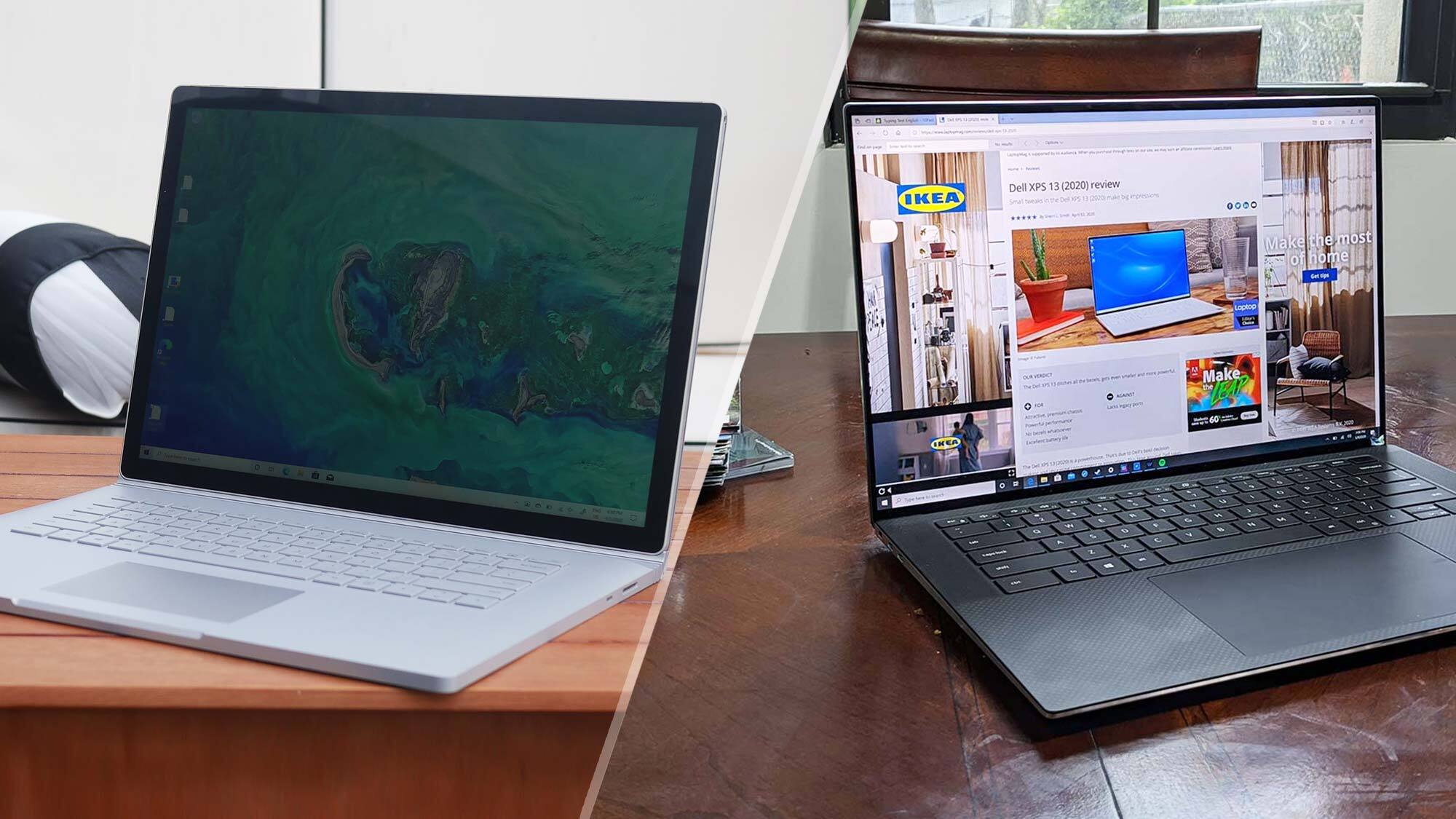
Disclaimer: This comparison came out a few years ago. If you're looking for newer models, check out our roundups of the best Dell laptops, best Microsoft Surface laptop deals, and, of course, our ranking of the best laptops overall, all written by reviewers with hands-on experience.
The original article follows below as we explore the performance of these two laptops.
If you need a 15-inch laptop that runs Windows 10, look no further than the Dell XPS 15 and Microsoft Surface Book 3. Designed for business users, college students, or content creators (videographers, photographers, etc), the XPS 15 and Surface Book 3 have gorgeous displays, deliver fast performance and flaunt premium designs.
But there are some crucial differences between these two notebooks that you should be aware of before you take the plunge. To help you make an informed buying decision, we're going to run through each aspect of these laptops and pick a winner. Without further ado, here is our heated face-off between two of the most premium Windows laptops around.
- Which ThinkPad is right for you?
- MacBook Air vs MacBook Pro: Which MacBook should you buy?
- Best MacBook: Apple laptop reviews and ratings
Dell XPS 15 vs Surface Book 3: Specs compared
Why you can trust Laptop Mag
| Row 0 - Cell 0 | Dell XPS 15 | Microsoft Surface Book 3 |
Price | $2,399 | $2,799 |
Display | 15.6-inch, 3840 x 2400-pixel | 15-inch, 3240 x 2160-pixel |
CPU | Intel Core i7-10750H CPU | Intel Core i7-1065G7 |
GPU | Nvidia GeForce GTX 1650 Ti (Max-Q) | Nvidia GeForce GTX 1660 Ti (Max-Q) |
RAM | 32GB | 32GB |
Storage | 512GB PCIe SSD | 512GB SSD |
Ports | 2 Thunderbolt 3, USB-C, lock slot, headphone, SD Card | USB-C, 2 USB 3.1 Type-A, Surface Connect, SD card, headphone |
Battery | 8:01 | 11:10 (laptop mode) |
Dimensions | 13.6 x 9.1 x 0.7 inches | 13.5 x 9.9 x 0.9 inches |
Weight | 4.5 pounds | 4.2 pounds |
Value and configurations
These are both expensive laptops but the Dell XPS 15 is the better value if you look at specs and price alone.
The base model of the Dell XPS 15 starts at $1,299 and has an Intel Core i5-10300H processor with 8GB of RAM, a 256GB PCIe SSD, an Intel UHD Graphics GPU and a 15.6-inch, 1920 x 1200 display.
The model we reviewed costs $2,399 and has an Intel Core i7-10750H CPU, 32GB of RAM, a 512GB PCIe SSD, an Nvidia GeForce GTX 1650 Ti Max-Q GPU and a 15.6-inch, 3840 x 2400 touch panel.
The Dell can be configured with up to an Intel Core i9-10885H processor, 64GB of RAM and a 2TB PCIe SSD, but it will cost you more than $3,000.
The $2,299 base model Surface Book 3 with a 15-inch display comes with an Intel Core i7-1065G7 CPU, 16GB of RAM, a 256GB SSD and an Nvidia GeForce GTX 1660 Ti Max-Q GPU.
Our $2,799 review unit upped the ante with 32GB of RAM and a 512GB SSD. On the high end, there is a $3,399 version with a Core i7 CPU, 32GB of RAM and a 2TB SSD.
And if you want to go for broke (literally), you can get a similar config with a 1TB SSD and Nvidia Quadro RTX 3000 GPU with Max-Q for $3,699.
Winner: XPS 15
Design
The XPS 15 is a traditional clamshell laptop whereas the Surface Book 3 is a detachable 2-in-1 with a lid that turns into a tablet.
The Surface Book 3's flexibility enabled by its unique form factor is what makes it stand out from the pack. If you don't need a laptop/tablet hybrid, look elsewhere (perhaps at the Surface Laptop 3) because the design is what makes the Surface Book 3 so expensive.
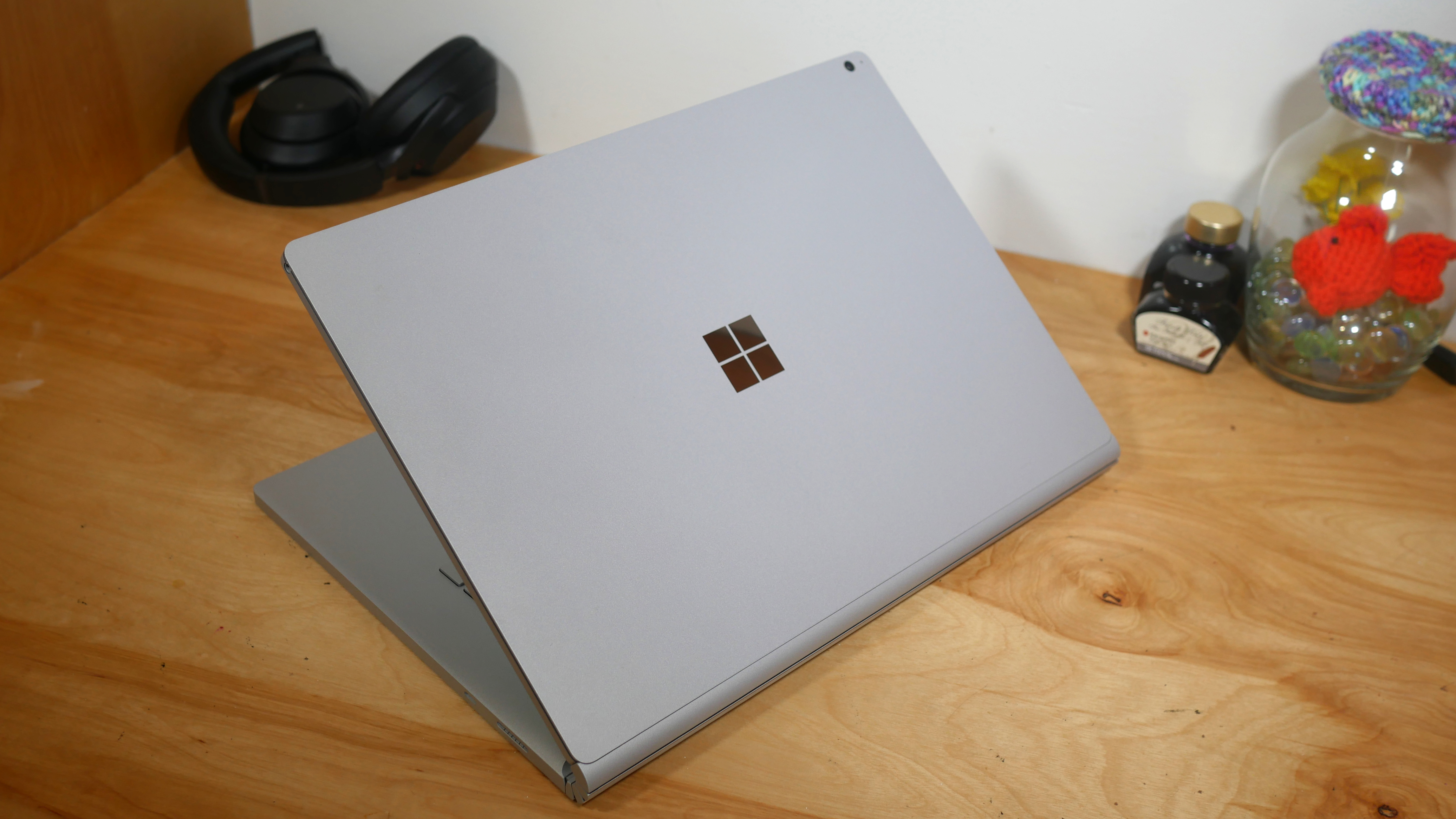
As a laptop, the Surface Book 3 looks like it was cut from a slab of concrete. Matte-gray magnesium coats the chassis and gives it a subtle texture. The unassuming design is simple and elegant, but an unsightly gap between the deck and lid when the laptop is closed, along with thick display bezels, ruin the impression of it being a modern machine.
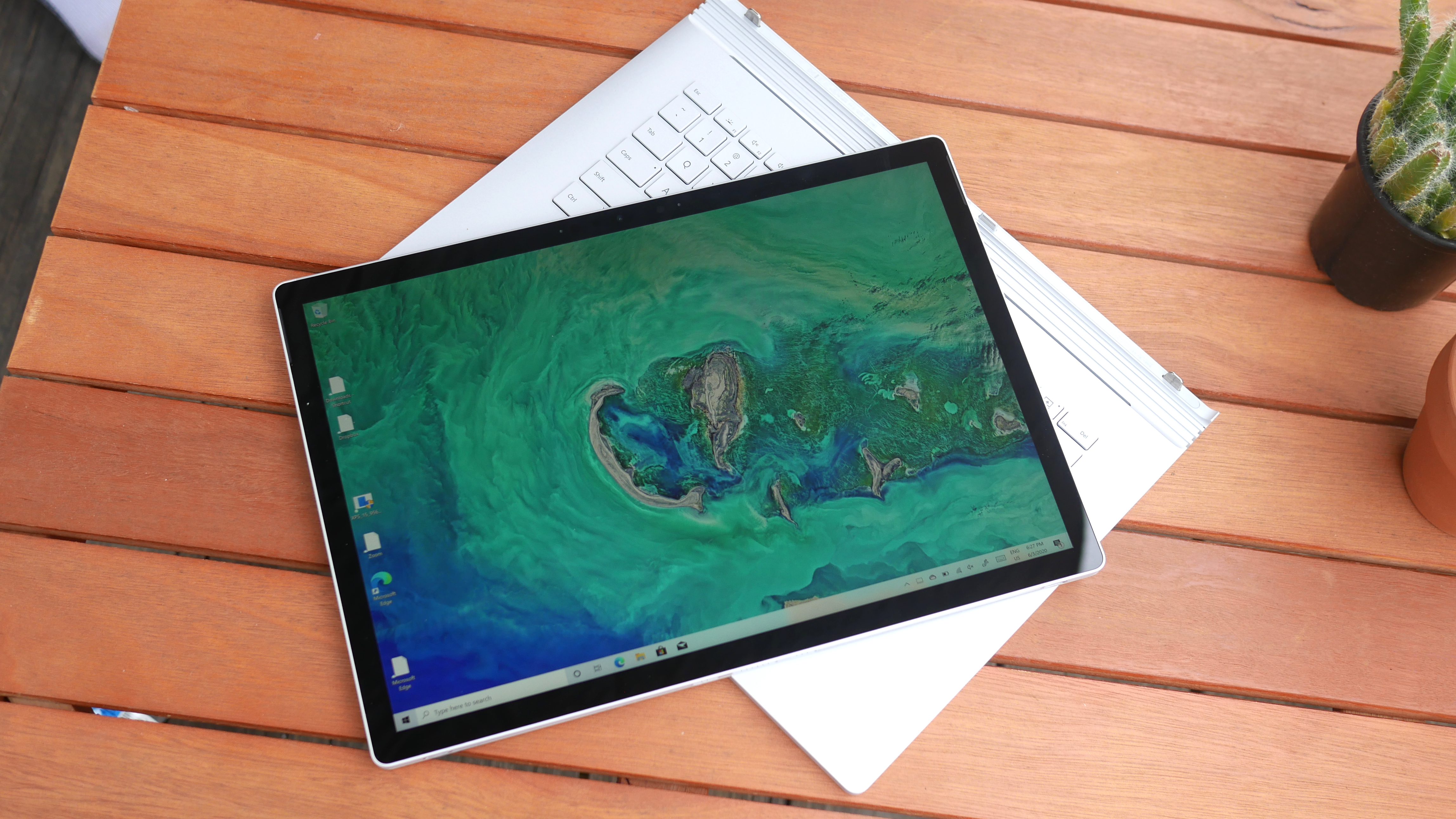
As with the previous models, the standout feature of the Surface Book 3 is the detachable display. With the press of a key, you can detach the 15-inch panel and use it as a discrete tablet. This means that, unlike most laptops, the Surface Book 3's components are housed in the lid, not the bottom portion. The tablet detaches with a firm yank and reattaches when you line up the connectors and prongs with those on the deck.
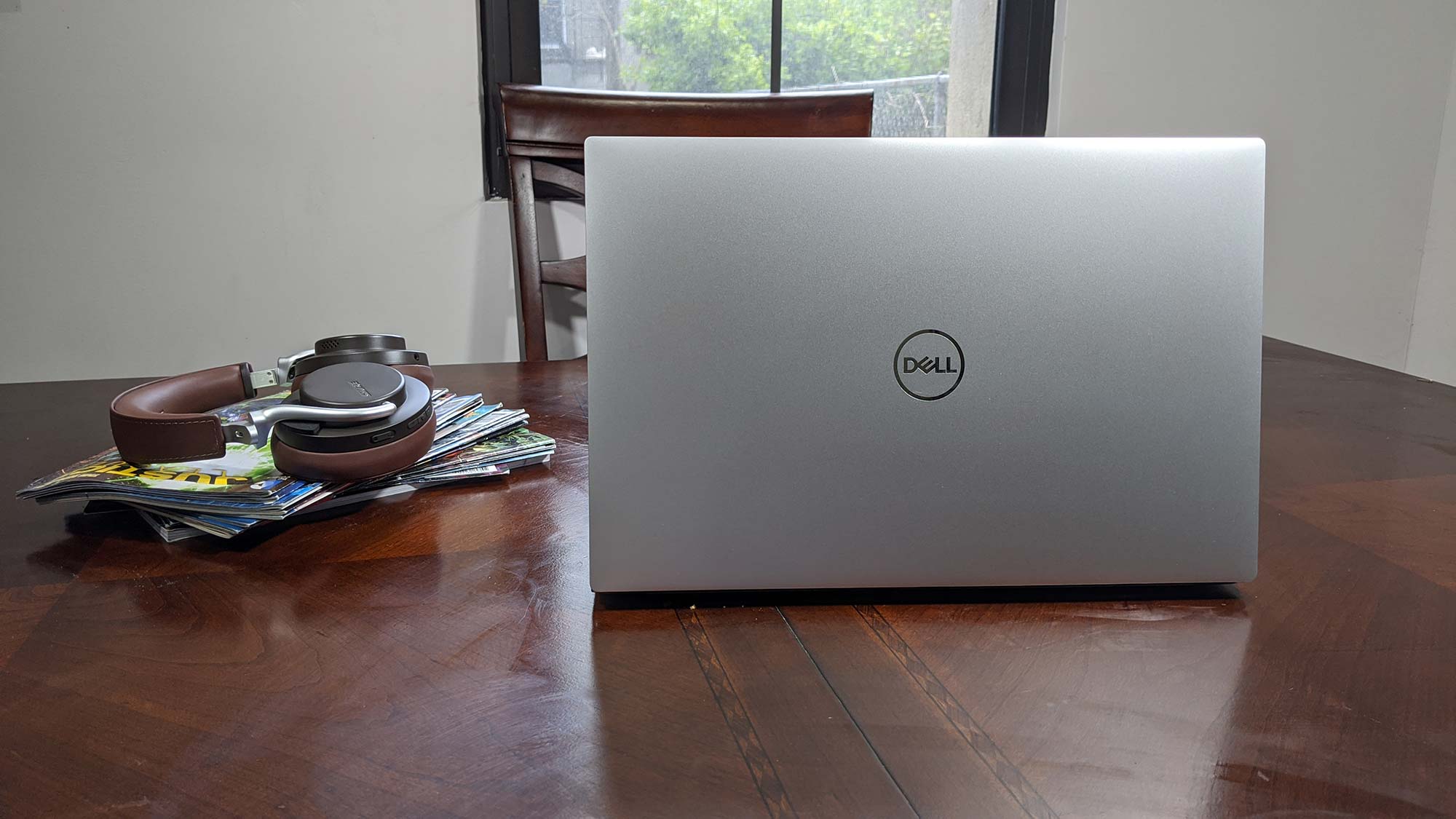
In comparison, the XPS 15 is your traditional clamshell laptop — nothing twists, detaches or folds. Redesigned for 2020, the XPS 15 has an ultra-compact chassis highlighted by a four-border InfinityEdge display. In short, there are no bezels surrounding the XPS 15's screen.
The XPS 15 has a fancy platinum silver CNC aluminum lid with a Dell logo engraved in the center. Open the lid and you'll notice black carbon fiber on the deck, along with speakers flanking the keyboard underneath which sits a massive trackpad. The power button also doubles as a fingerprint scanner. Unlike the Surface Book 3, the XPS 15 does not have an IR camera for quick login.
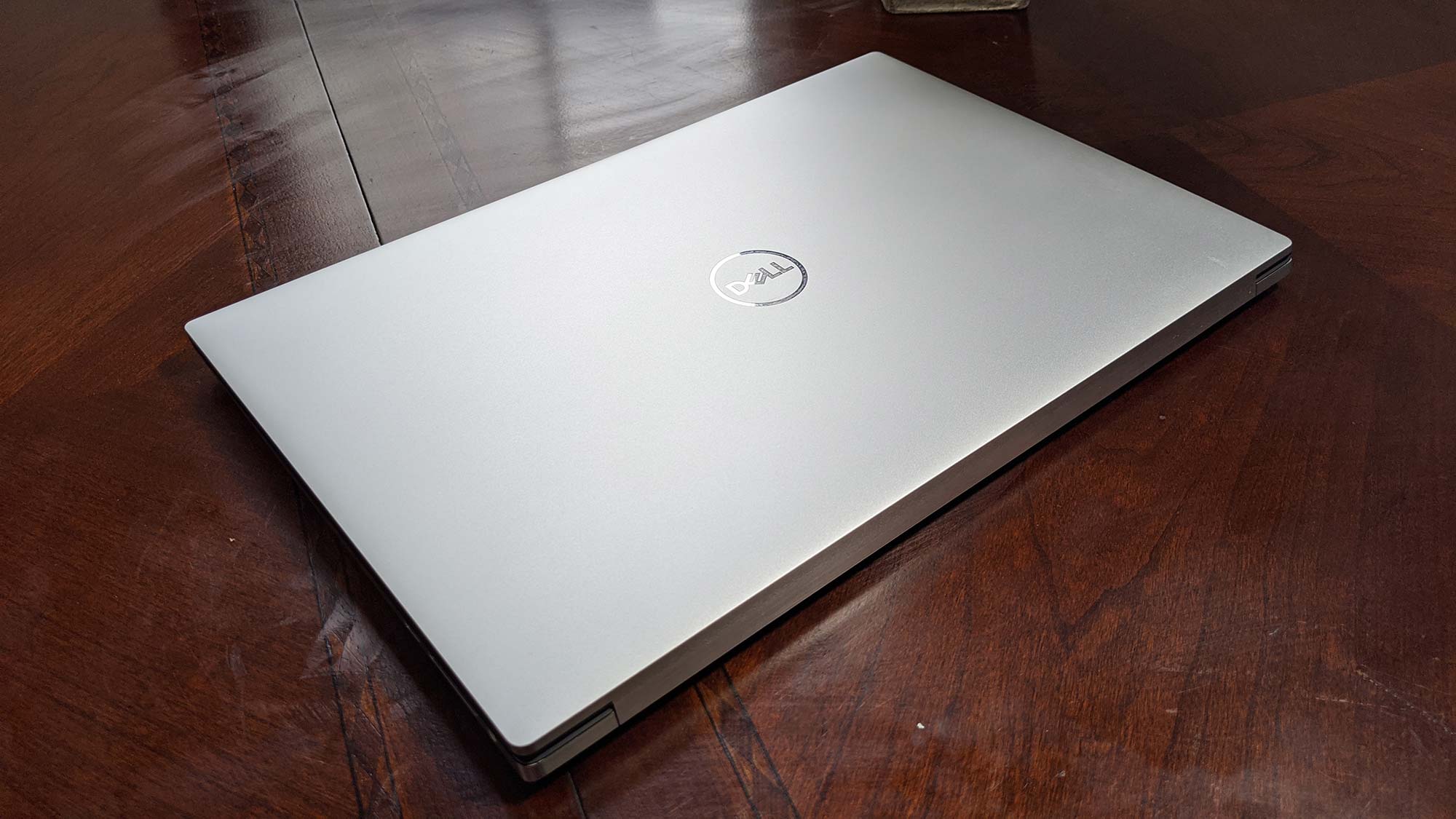
At 4.5 pounds and 13.6 x 9.1 x 0.7 inches, the XPS 15 is thinner and smaller but heavier than the Surface Book 3 (4.3 pounds, 13.5 x 9.9 x 0.9 inches).
Winner: XPS 15
Ports
The XPS 15 surprisingly has a full SD card reader on the right side next to a USB-C port and a headphone jack. On the left side are a pair of Thunderbolt 3 ports and a lock slot.
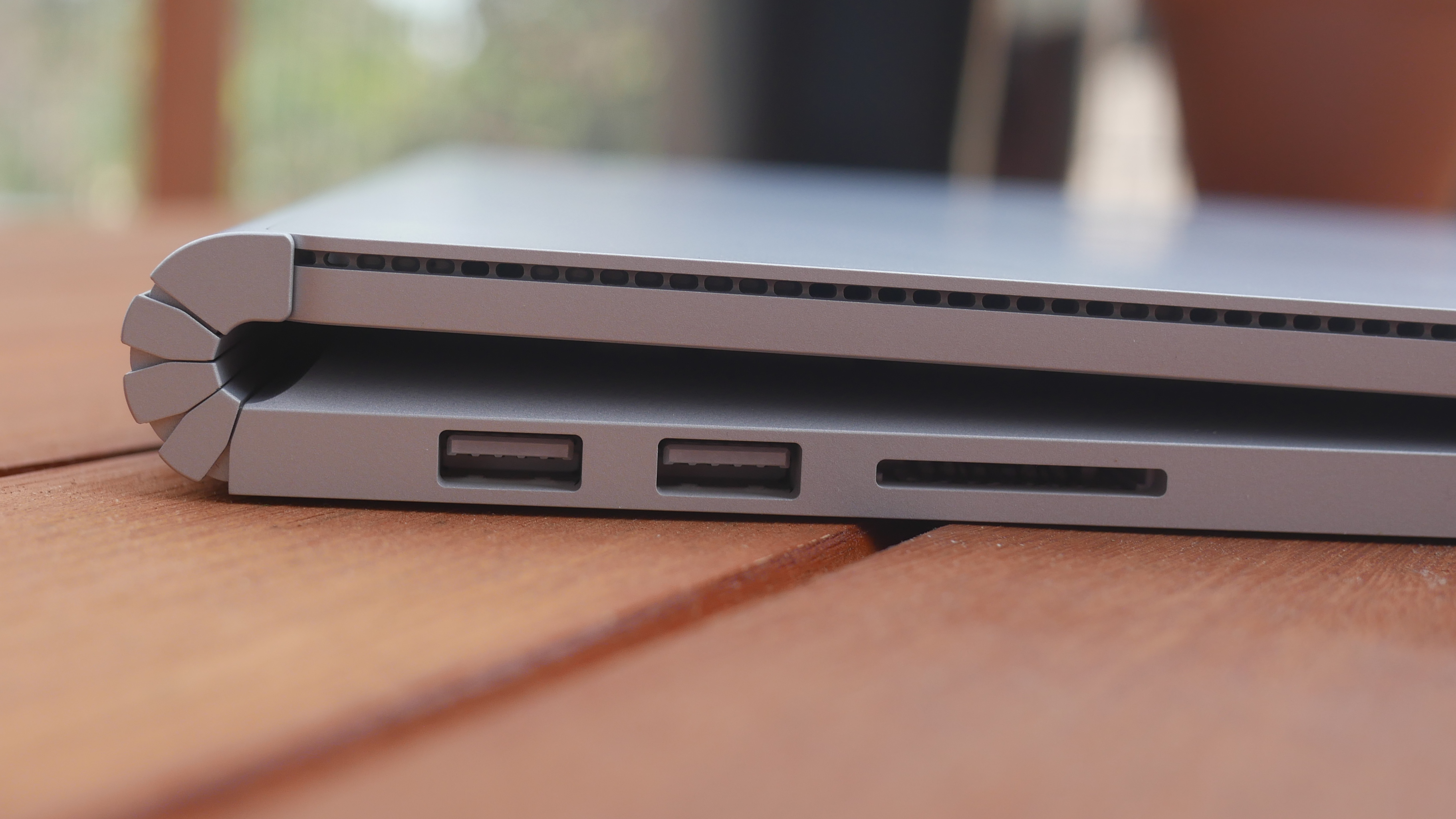
Although it doesn't have a Thunderbolt 3 port, the Surface Book 3 has a wider selection of ports, which includes two USB 3.1 ports and an SD card slot on the left side. On the right side are a USB-C input and a Surface Connect port for charging. The headphone jack is on the top-right corner of the lid (for tablet mode)
Winner: XPS 15
Display
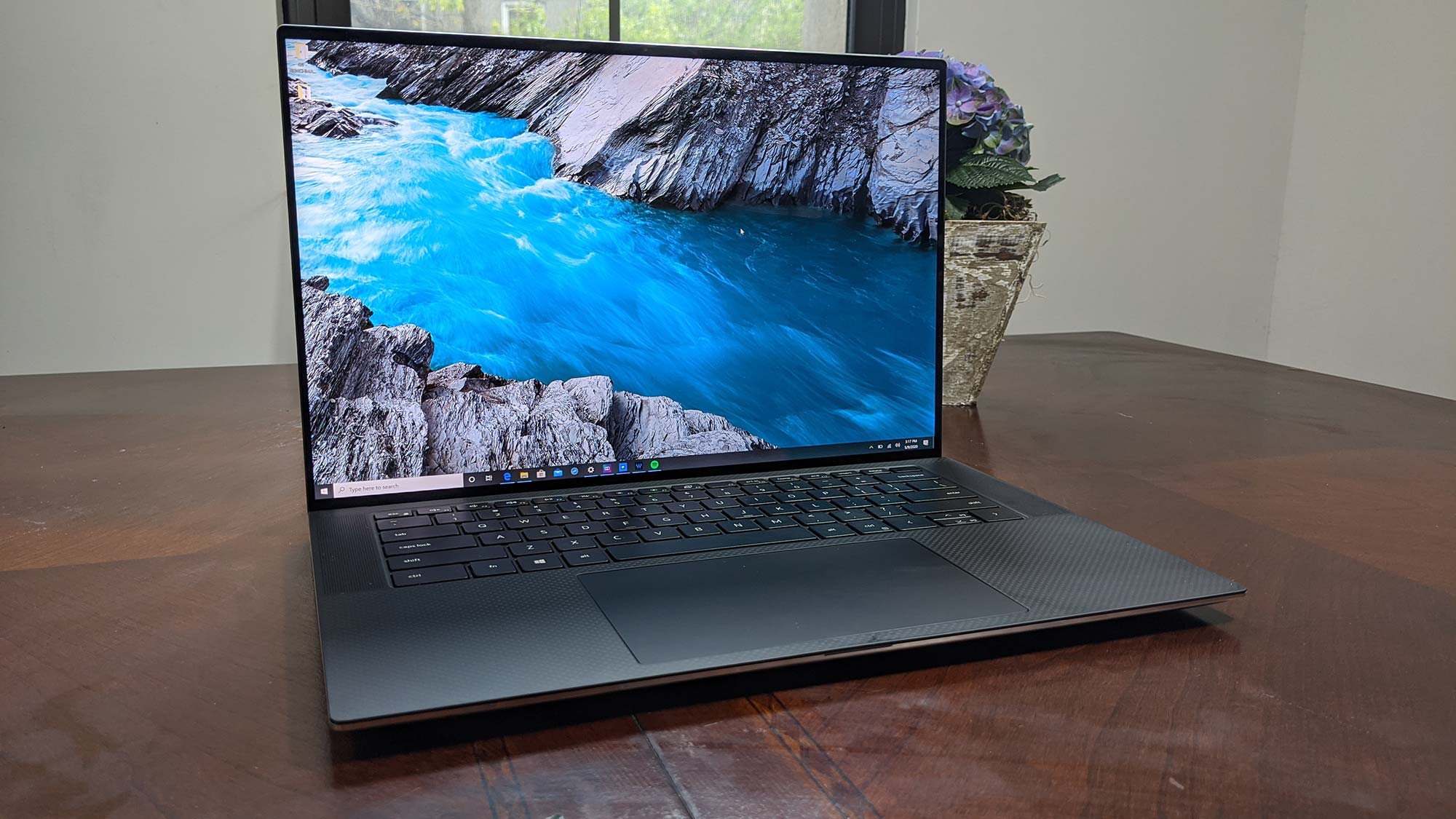
You'll have no complaints watching Netflix shows or editing photos on these laptops as they both flaunt stunning panels. However, the XPS 15's 15.6-inch, 3840 x 2400-pixel display (with a 16:10 aspect ratio) has the edge in both color and brightness compared with the Surface Book 3's 15-inch, 3240 x 2160-resolution screen (3:2 aspect ratio).
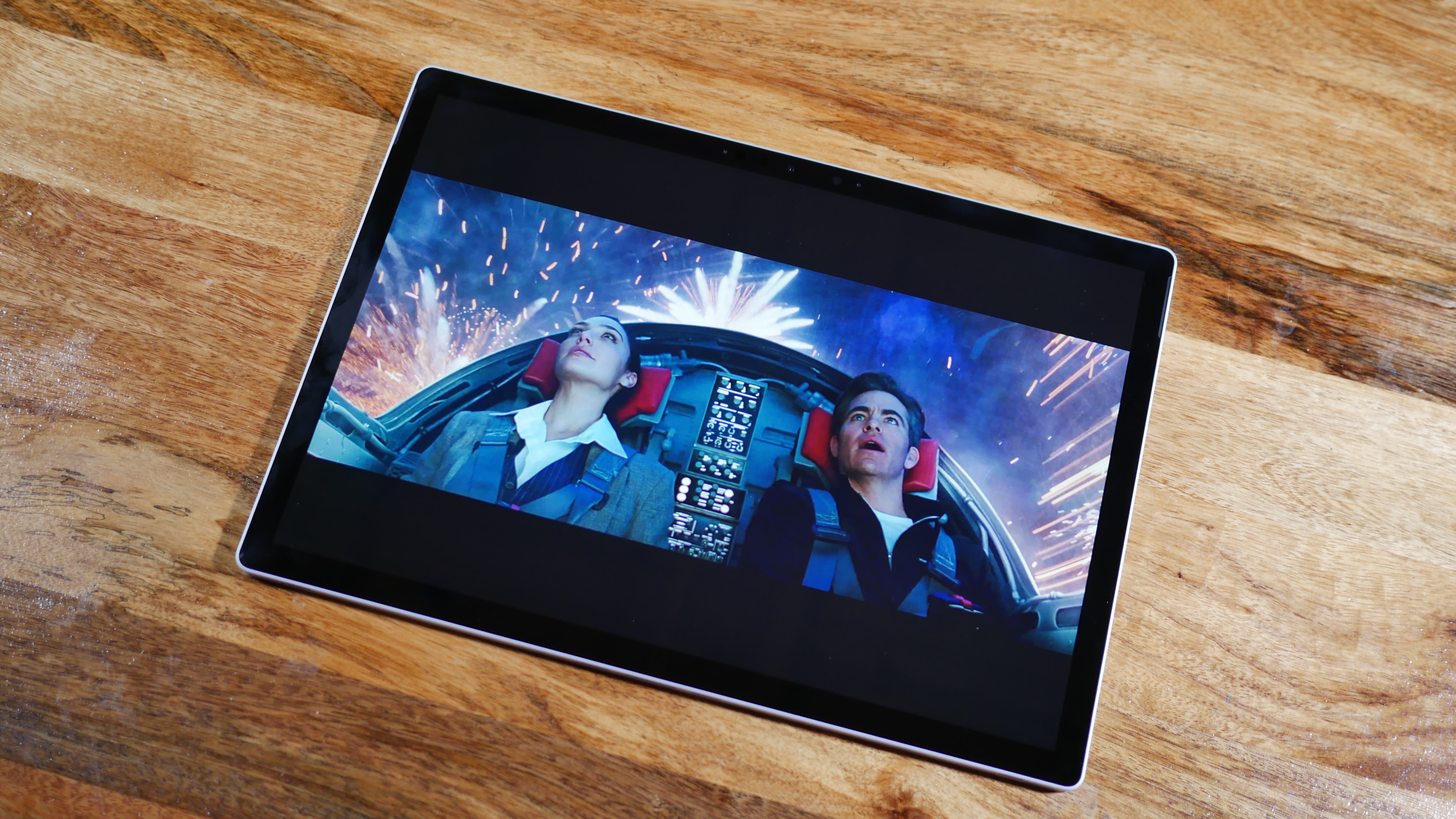
According to our colorimeter, the XPS 15's screen covers 132% of the sRGB color gamut whereas the Surface Book 3's screen hit just 101%. The premium category average is 121%.
The XPS 15's panel reaches 434 nits, outshining the 402-nit display on the Surface Book 3. Both get significantly brighter than the average premium laptop (368 nits).
Winner: XPS 15
Keyboard and touchpad
The Surface Book 3 is one of the most comfortable laptops to type on thanks to its snappy backlit keys, which deliver a decent amount of travel considering how thin the laptop is. There is a nice heftiness to each keystroke, which is rewarded with a satisfying tactile bump. Microsoft could have used the extra space to spread the keys out more, regardless, my fingers never felt cramped.
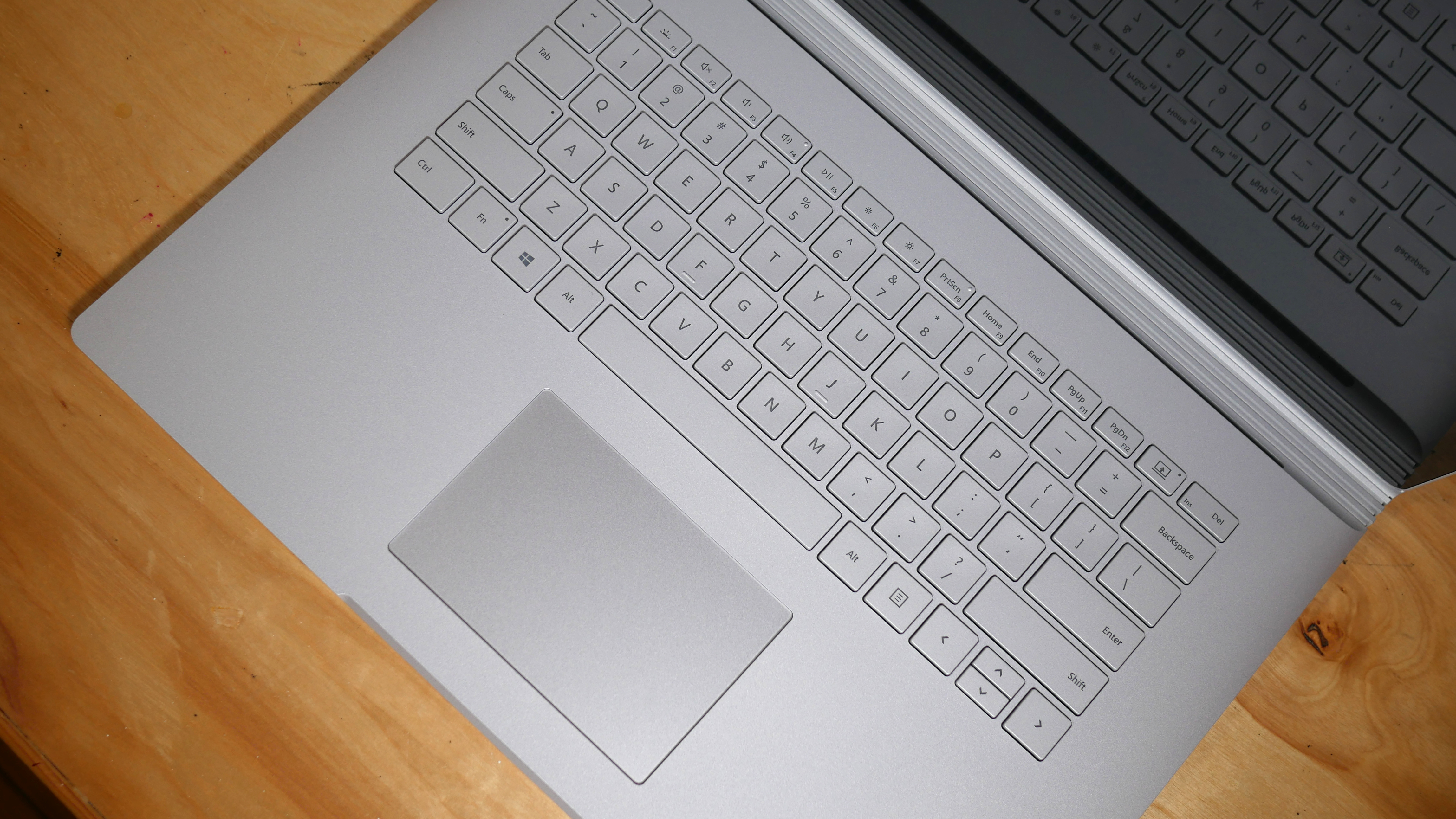
The new XPS 15 has larger keycaps than the versions before it, which makes it easier to type on if you have large fingers. The keys are well-spaced and offer bouncy feedback, although they aren't as plush as those on the Surface Book 3.
But the XPS 15 wins some points back with its absolutely gigantic touchpad, which would even make Apple blush. At 5.9 x 3.5 inches, it is 62% larger than the one on the previous model. Fortunately, the palm-rejection is top-notch and the surface was responsive to our swipes.
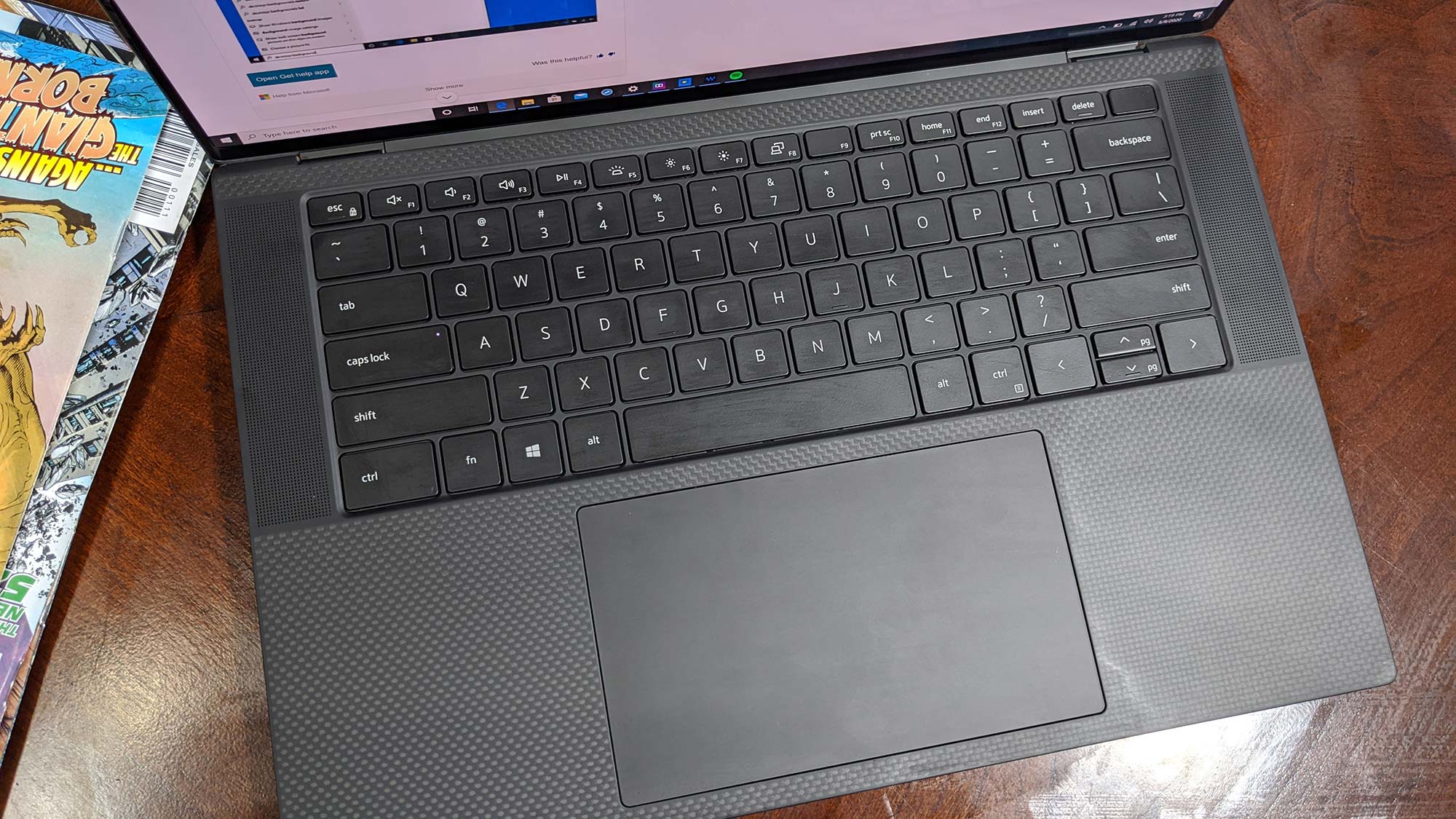
In contrast, the 4.1 x 2.7-inch touchpad on the Surface Book 3 is disappointingly small, although we had no problems using it to execute Windows 10 gestures, like pinch-to-zoom.
Winner: Draw
Performance
If raw performance matters most to you, then get the XPS 15. It uses 10th Gen Intel H-series CPUs, which are more powerful than the U-series processors in the Surface Book 3.
Specifically, our XPS 15 came with an Intel Core i7-10750H processor and a whopping 32GB of RAM. It delivers faster performance than the Surface Book 3 we reviewed, which has an Intel Core i7-1065G7 CPU and 32GB of RAM.
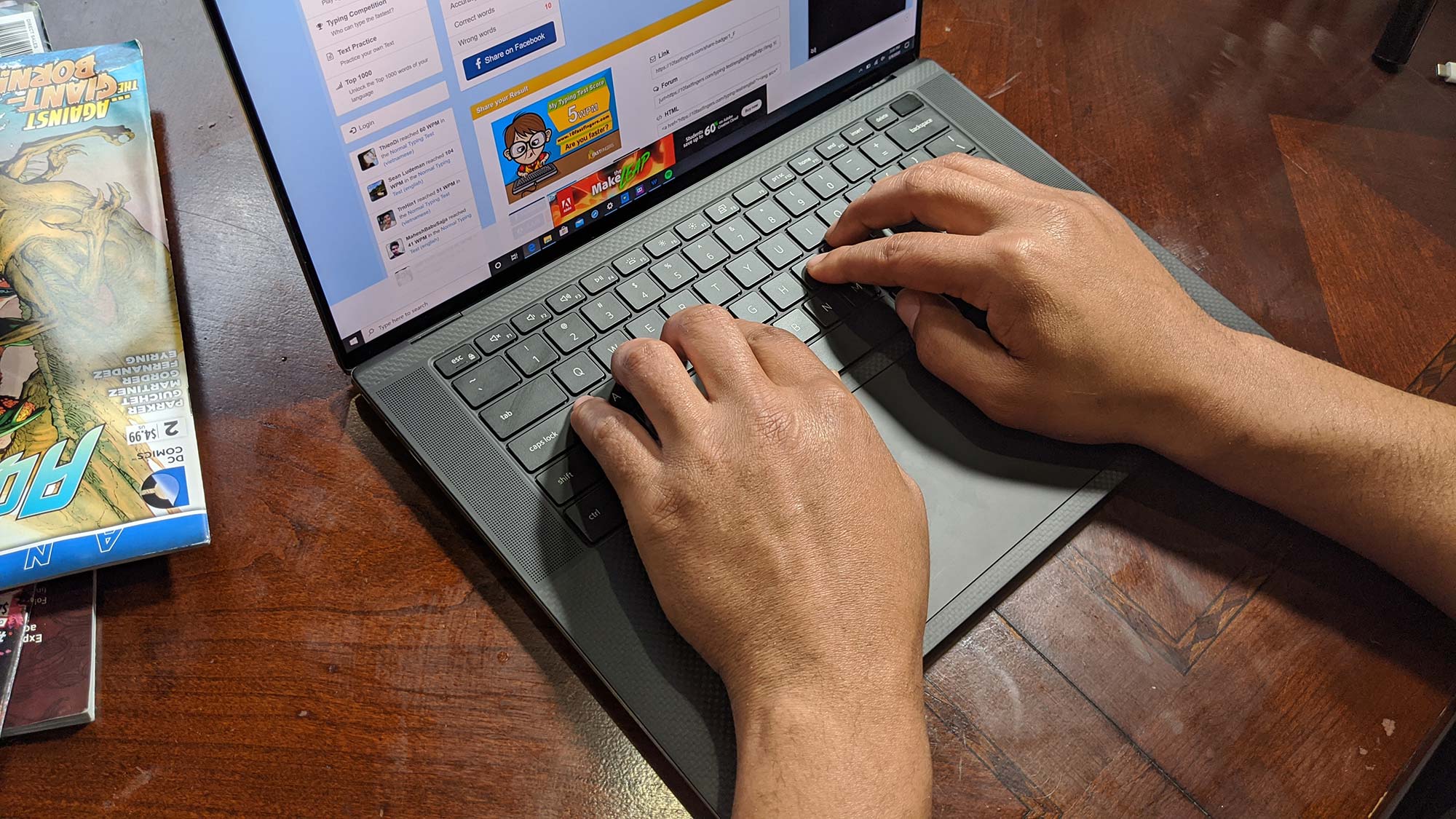
The Surface Book 3 notched a 3,831 on the Geekbench 5.0 overall performance test, which is well short of what the XPS 15 (6,147) achieved. It also fell short of the category average (4,224).
We then tasked the Surface Book 3 to convert a 4K video to 1080p resolution using the Handbrake app. It did so in 21 minutes and 31 seconds, which is far slower than the XPS 15 (10:15) and the average (18:35).
The 512GB PCIe SSD in the Surface Book 3 is its saving grace. The drive duplicated 5GB of multimedia data in 6 seconds for a transfer time of 862.6 megabytes per second. The XPS 15 (726 MBps) couldn't keep the pace.
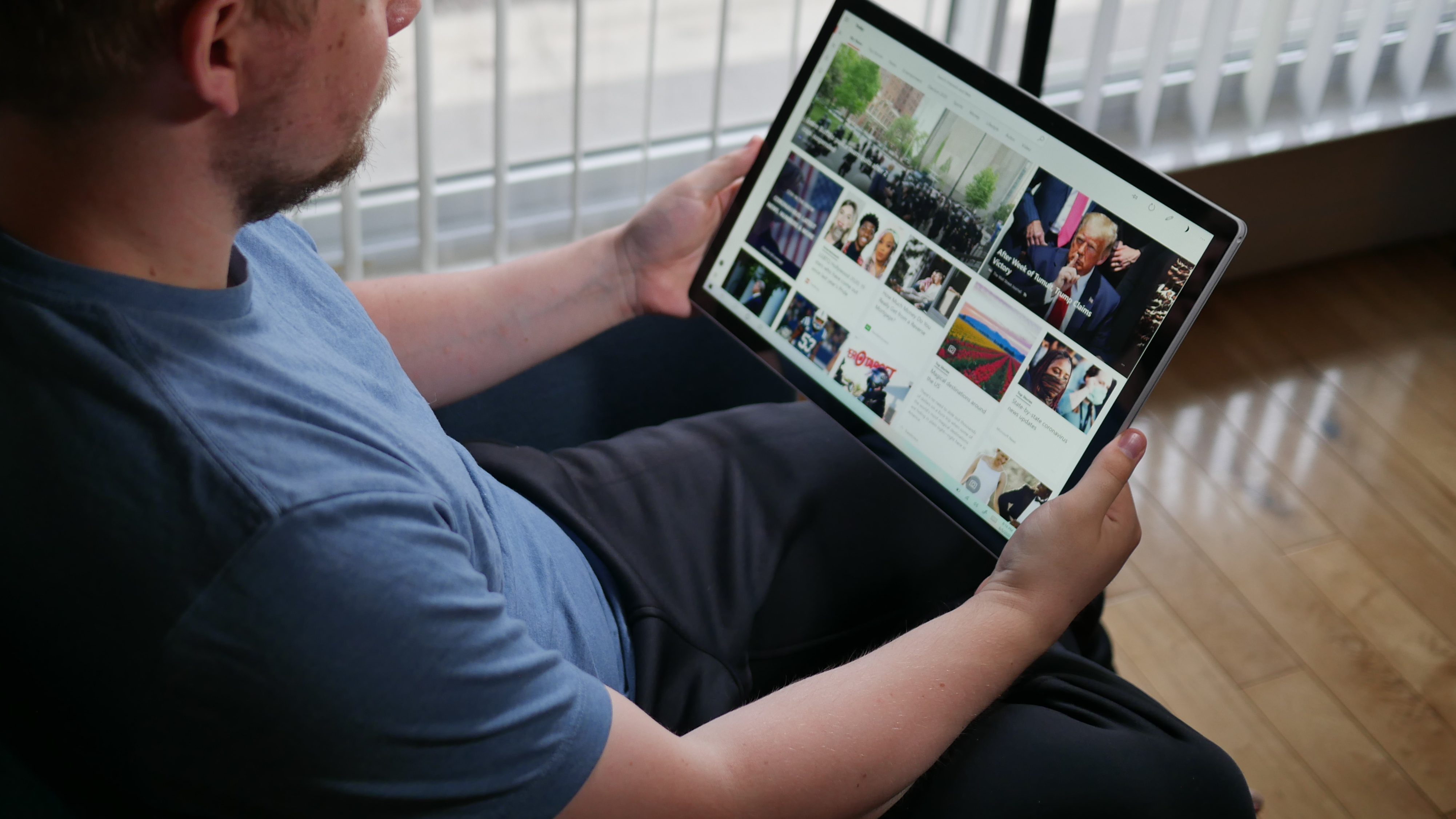
The Surface Book 3 also has a slightly better discrete GPU if you opt for the more premium models. The Nvidia GeForce GTX 1660 Ti with Max-Q GPU (4GB of vRAM) it uses drove the Sid Meier's Civilization VI: Gathering Storm benchmark (1080p, Very High) at 63 frames per second whereas the XPS 15 played the same game at 42 fps with its GeForce GTX 1650 Ti (Max-Q) GPU.
If you're doing more work than play, the Surface Book 3 now offers a Quadro option in the Quadro RTX 3000 GPU
Winner: XPS 15
Battery life
The XPS 15 with a 4K display lasted a respectable 8 hours and 1 minute on our battery test, which involves continuous web browsing over Wi-Fi at 150 nits.
That's a decent result for a 4K laptop, although the Surface Book 3 endured for several additional hours, clocking a runtime of 11 hours and 10 minutes in laptop mode. The tablet itself lasts for 3 hours and 27 minutes.
Winner: Surface Book 3
Overall winner: Dell XPS 15
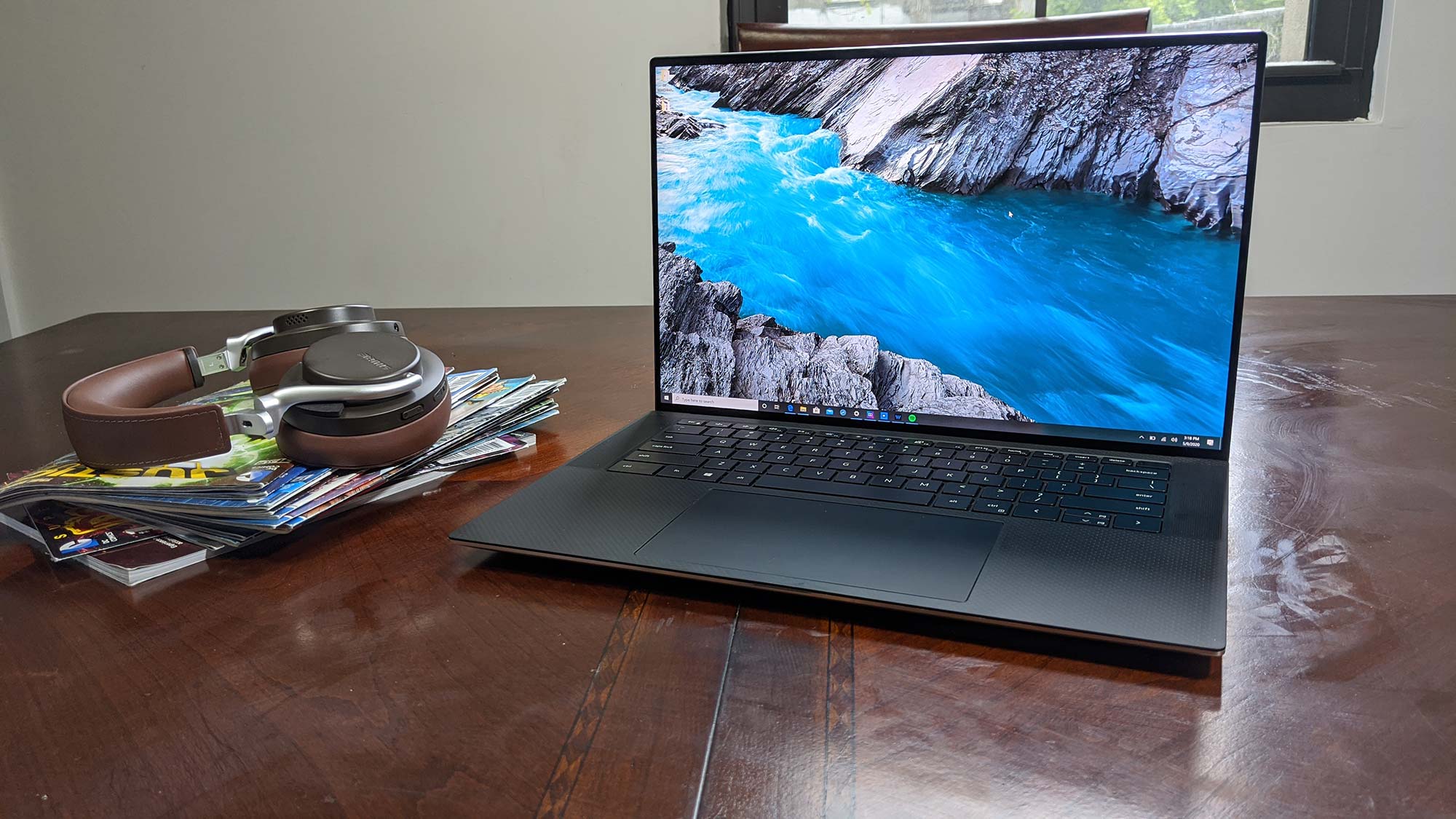
The XPS 15 edges out the Surface Book 3 in this contest but it's not as easy as saying "Buy the Dell." It's hard to quantify the value of the Surface Book 3's flexible design, but it must be taken into account when you're considering these laptops. With that said, if you need a tablet, or like the idea of using one for watching TV, showing presentations or reading, then buy the Surface Book 3 — no other device gives you the experience of using a full laptop and tablet in one.
| Header Cell - Column 0 | XPS 15 | Surface Book 3 |
|---|---|---|
Value (10) | 7 | 5 |
Design (10) | 9 | 8 |
Ports (10) | 7 | 6 |
Display (15) | 13 | 12 |
Keyboard/Touchpad (15) | 13 | 13 |
Performance (20) | 19 | 17 |
Battery Life (20) | 15 | 18 |
Total | 83 | 79 |
On the other hand, if you prefer a traditional laptop form factor, then the XPS 15 is the best 15-inch laptop on the market thanks to its fast performance, gorgeous displays, and improved keyboard and touchpad. And don't worry about battery life. We only tested the battery life of the 4K model, but based on that result, we expect the 1080p version to last a full day on a charge.
In conclusion, the XPS 15 and Surface Book 3 are some of the Windows laptops you can buy; your decision should ultimately come down to price and your preferred form factor.
Stay in the know with Laptop Mag
Get our in-depth reviews, helpful tips, great deals, and the biggest news stories delivered to your inbox.
Phillip Tracy is the assistant managing editor at Laptop Mag where he reviews laptops, phones and other gadgets while covering the latest industry news. After graduating with a journalism degree from the University of Texas at Austin, Phillip became a tech reporter at the Daily Dot. There, he wrote reviews for a range of gadgets and covered everything from social media trends to cybersecurity. Prior to that, he wrote for RCR Wireless News covering 5G and IoT. When he's not tinkering with devices, you can find Phillip playing video games, reading, traveling or watching soccer.

